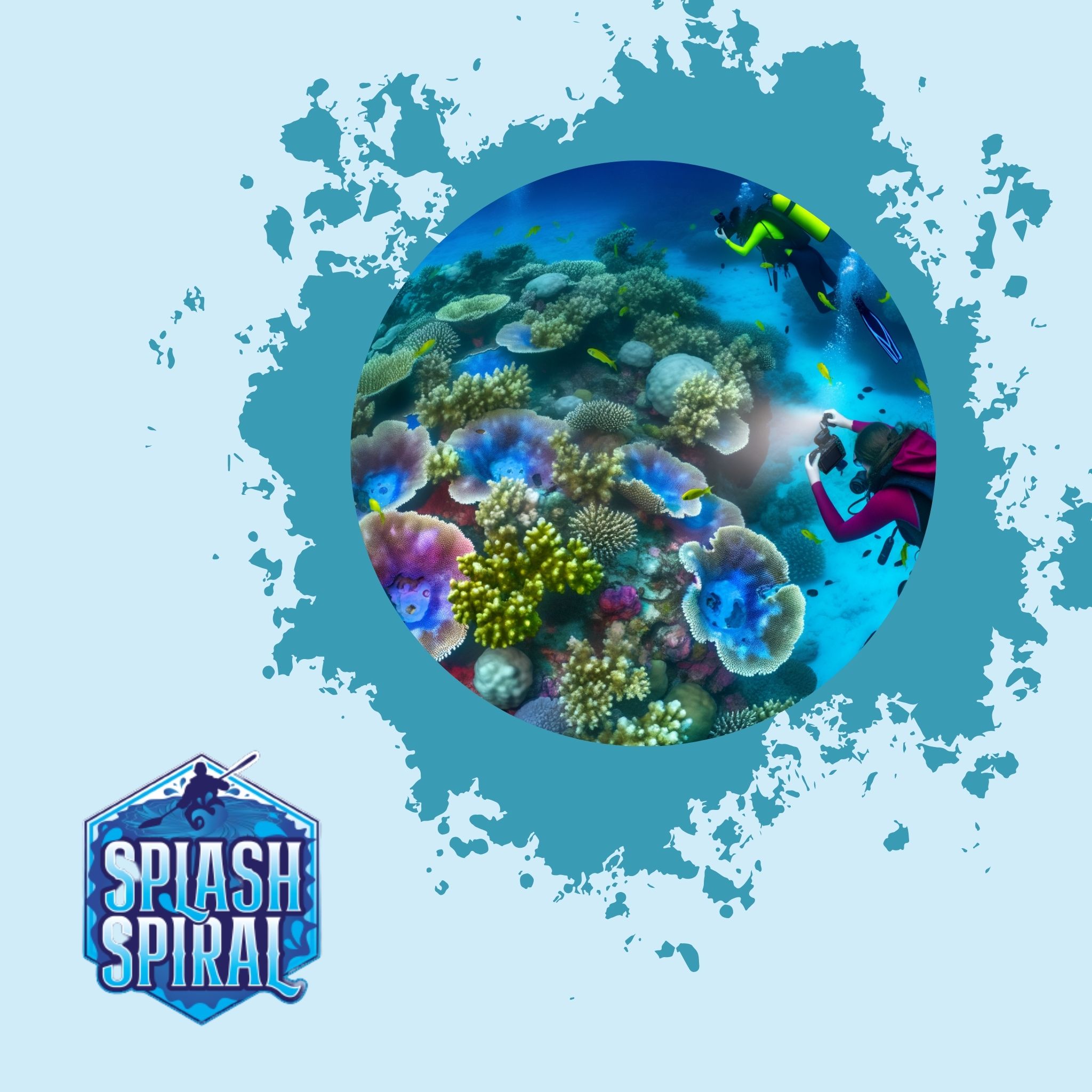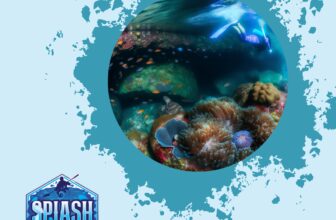
As a scuba diver, you can play a crucial role in protecting our ocean ecosystems by identifying and reporting coral diseases. Coral reefs, often termed the "rainforests of the sea," face numerous threats, with coral diseases being one of the most significant. Through citizen science, divers can contribute to reef monitoring and help in preserving coral health. This guide will show you how to identify common coral diseases and report your findings effectively.
Introduction
Coral reefs are vital to the health of our oceans, supporting a diverse range of marine life and contributing to global biodiversity. As a diver, you are in a unique position to help protect these critical ecosystems. By learning to identify and report coral diseases, you can play a hands-on role in conservation efforts and ensure that reefs remain vibrant and robust for future generations.
Purpose of This Guide
This guide aims to equip beginner divers with the knowledge and tools they need to:
- Identify common coral diseases effectively
- Report their findings systematically
Benefits of Participation
By actively participating in citizen science, you can:
- Make a significant impact on reef monitoring
- Contribute to the broader understanding and preservation of coral health
Who Is This Guide For?
- Beginner divers
- Divers looking to deepen their diving experience
Your Role in Conservation
Whether you're just starting out or looking to deepen your diving experience, this guide is your first step toward making a positive difference in the underwater world. Through your efforts, you can help ensure that coral reefs remain vibrant and robust for future generations.
Understanding Coral Diseases
Coral diseases are essentially afflictions that can lead to the deterioration and death of coral colonies. These diseases might be caused by bacteria, fungi, viruses, or even environmental stressors like changes in water quality and temperature. Identifying these diseases as closely as possible is key to intervening at the right time and reducing the spread of these ailments.
Why is this important? Well, coral reefs are integral to marine ecosystems, providing habitat, food, and nursery grounds for many marine species. When coral reefs suffer from diseases, the entire marine ecosystem feels the impact. For instance, "Sargassum Blooms: Ecological Impacts and Diving Considerations" highlights how even subtle changes in the marine environment can have profound effects on the ecosystem balance. Coral diseases can trigger cascading effects that impact fish populations, water quality, and even coastal protection.
Recognizing and understanding coral diseases allows divers like you to become crucial players in mitigating these impacts. By regularly monitoring reefs and reporting any signs of disease, divers contribute to broader conservation efforts that aim to preserve these vital marine habitats. Being part of this process not only helps the environment but can also enhance your diving experience, giving every dive a meaningful purpose.
Common Coral Diseases to Watch For
Black Band Disease (BBD)
- Appearance: Black, dark red, or purple bands encircling the coral.
- Impact: Leads to total tissue loss in corals.
- Identification Tips: Look for concentric bands covering the coral's surface.
Think of BBD as a menacing ribbon choking the coral. This sinister band moves like a slow army, consuming coral tissue and leaving dead, white skeletons in its wake. It’s not subtle— you can't miss the dark, ominous lines set against the otherwise colorful coral.
White Band Disease (WBD)
- Appearance: White bands or spots on coral, signaling tissue loss.
- Impact: Affects branching corals, leading to their death.
- Identification Tips: Observe loss of coral skeleton and presence of algae.
WBD is like a slowly advancing frostbite. It targets the branching corals— those appealing, tree-like structures—and creates stark white lesions. Over time, these wounds spread, turning lush, vibrant branches into ghostly skeletons overrun by algae. Keep an eye out for these white patches as they encroach upon healthy tissue.
Yellow Band Disease (YBD)
- Appearance: Yellow rings or bands on coral, indicative of degraded tissue.
- Impact: Affects star and starlet corals.
- Identification Tips: Check for yellowish-brown bands that spread across coral colonies.
YBD is the coral equivalent of a yellow caution tape. You'll spot yellowish or brownish rings or bands that seem to mark the affected areas. This disease is particularly fond of star and starlet corals. Look for the telltale signs of faded, weakening tissue as these yellow bands wrap around the coral, foreboding the loss of living color.
Stony Coral Tissue Loss Disease (SCTLD)
- Appearance: Rapid tissue loss in various coral species.
- Impact: Extremely contagious and can decimate coral populations.
- Identification Tips: Look for white patches of exposed skeleton in numerous coral types.
SCTLD is the scariest on this list. It acts fast, causing severe and rapid tissue loss across many coral species, and spreads like wildfire. Spotting it means seeing stark white patches where healthy tissue used to be. This disease respects no boundaries, and early identification is key to stopping its destructive march. Keep your camera ready and document these critical sightings.
By familiarizing yourself with these common coral diseases, you can become an essential player in the conservation effort. Remember, your keen eyes and prompt reports can help scientists and conservationists take timely action to protect these fragile underwater ecosystems.
How Diver Contributions Aid in Reef Monitoring
Citizen science has revolutionized how we approach marine conservation. Essentially, it involves the public in scientific research and data collection, empowering everyday individuals—like you, divers—to become crucial contributors to our understanding and protection of marine environments. In the context of reef monitoring, your observations and data collection efforts can help scientists track the spread and impact of coral diseases, providing valuable insights necessary for crafting effective conservation strategies.
When divers participate in activities like monitoring coral diseases, they gather firsthand data that might otherwise be missed due to the sheer vastness of ocean environments. This grassroots involvement is akin to having an army of passionate volunteers, all collectively working towards a common goal. The importance of this becomes especially clear when considering works such as "Marine Fungi: The Overlooked Kingdom in Ocean Ecosystems", which highlight how interconnected and intricate marine ecosystems truly are.
As a diver, your role is straightforward yet impactful. By learning to identify and report on coral diseases, you contribute to long-term studies that track the health of coral reefs. Your data feeds into larger databases that marine biologists analyze to detect trends, identify new outbreaks, and understand disease dynamics. This collective effort makes it possible to implement timely interventions, improving the chances of preserving these vital ecosystems.
Remember, you're not just diving for the thrill of it. Each time you document a diseased coral, you're adding a piece to a much larger puzzle. This puzzle is crucial for ensuring future generations can continue to enjoy the vibrant underwater worlds we're so passionate about. So, keep your eyes peeled, your cameras ready, and dive knowing you're part of a global movement to protect our oceans.
Reporting Coral Diseases: Step-by-Step Guide
Preparation Before Diving
Before you hit the water, some groundwork ensures you're set to accurately report coral diseases.
- Pack a Waterproof Notepad and Pencil: You’ll need something durable to jot down details underwater.
- Have an Underwater Camera Ready for Documentation: High-quality images make it easier to identify and report diseases.
- Be Aware of Specific Coral Diseases You Might Encounter: Familiarize yourself with their appearance and characteristics so you’ll know what to look for.
During the Dive
Once submerged, awareness and careful observation are key.
- Observe Corals Carefully for Signs of Disease: Take your time. Scan each coral colony systematically.
- Take Clear Photographs of Any Diseased Corals: Ensure the photos are in focus and capture the affected area clearly.
- Note the Location and Depth of Affected Corals: Use your notepad to record precise location and depth details, as this information is crucial for monitoring trends and impacts.
Post-Dive Reporting
Your underwater work is essential, but the reporting process cements your contributions.
- Compile Your Observations into an Organized Report: Gather your notes and photos. Structure them clearly, making sure to include all relevant details.
- Use Online Platforms and Local Conservation Groups to Submit Your Findings: Websites like Reef Check or CoralWatch are great places to start. They often have specific formats or guidelines for submitting sightings.
- Update Your Records on Websites Dedicated to Reef Monitoring and Citizen Science: Keep your data current. Revisit the platforms to update your entries as needed, contributing to ongoing monitoring efforts.
By following these steps, you can ensure your dives make a tangible difference in the fight to preserve our coral reefs. Happy diving!
Resources and Tools for Citizen Scientists
Getting started with coral disease identification and reporting doesn't require advanced equipment or prior experience. A few user-friendly resources and tools can set you on the right path:
Useful Apps and Websites:
- Reef Check: Offers a comprehensive platform for volunteer divers to submit their observations. It provides detailed protocols for monitoring coral reefs and a vibrant community to share insights and data.
- CoralWatch: An initiative based at the University of Queensland, CoralWatch uses a simple chart to help divers monitor coral health based on color variations. The accompanying app allows you to log data easily.
- iNaturalist: This app helps you document wildlife encounters, including coral diseases. It has a feature for sharing observations with experts for accurate identification and community feedback.
- Anecdata: A citizen science platform where divers can report environmental data. Their user-friendly interface makes it easy to log your findings and compare them with other data sets.
Training Programs:
- PADI Coral Reef Conservation Specialty: This course offers a deeper understanding of coral ecosystems and threats they face. It’s a great first step if you’re passionate about marine conservation.
- Reef Check EcoDiver Program: This certification program trains divers on standardized methods for reef monitoring, making your contributions practical and scientifically valuable.
- NOAA Coral Reef Monitoring Course: Conducted by the National Oceanic and Atmospheric Administration, this course educates divers on coral reef monitoring techniques and the importance of coral health.
Using these resources, you not only enhance your diving experience but contribute significantly to marine conservation efforts. These tools will help you accurately identify, document, and report coral diseases, making a real difference in the preservation of our ocean ecosystems.
Encouraging Further Participation
Alright, so you've got the basics down and you're ready to take the plunge into coral disease identification and reporting. But what about bringing others on board? Here's how you can get your dive buddies excited about contributing to reef monitoring.
Share Your Experience
First off, talk about your own experience. Nothing beats a genuine story. If you've spotted a diseased coral and reported it, let others know. Share your excitement about making a real impact. Post your findings and photos on social media platforms or dive community forums. Use hashtags like #SaveOurCorals or #CitizenScience for wider reach.
Dive as a Team
Team up with fellow divers. Diving is always more fun with friends. When you dive in pairs or groups, you can cover more ground and cross-verify coral health observations. It's safer, and you all get to be part of something bigger than just a regular dive.
Educate and Train
Bring up coral disease identification during dive briefings or downtime between dives. Simple tips and the sharing of knowledge can spark interest. Consider organizing mini-workshops or info-sessions. It doesn’t have to be formal—just a quick chat about what to look for and how to report it.
Competitive Edge
People love challenges, so why not introduce a friendly competition? See who among your friends can spot the most instances of coral disease or contribute the most reports. Offer small prizes or even just bragging rights. It turns reef monitoring into a fun, engaging activity.
Stay Updated
Sign up for newsletters or join Facebook groups dedicated to coral conservation and marine life. Websites like "Scuba Diving" often post updates on new research, emerging threats, and success stories. Sharing these updates keeps the issue top of mind and fosters a sense of ongoing community involvement.
Leverage Apps and Tools
Encourage your peers to download apps like Reef Check or CoralWatch. These tools make it easy to log observations and often provide instant feedback. When reporting becomes as simple as a few taps on your phone, people are more likely to participate.
Participate in Events
Look out for local or international reef monitoring events and campaigns. Many organizations host annual or bi-annual events to focus efforts on specific areas. Participating in these events not only adds value to the cause but also connects you with like-minded individuals and experts.
So, gear up and spread the word. Every bit of data collected can help scientists and conservationists make informed decisions to protect our coral reefs. You’re not just diving; you’re making a difference. Happy diving and happy monitoring!
Conclusion
Recap
Understanding and reporting coral diseases aren't just for marine biologists; they're for you, the everyday diver. We've walked through major diseases such as:
- Black Band Disease: Characterized by black bands.
- White Band Disease: Noted for its white spots.
- Yellow Band Disease: Identified by yellow rings.
- Stony Coral Tissue Loss Disease: Recognized by rapid tissue loss.
Every dive you make armed with this knowledge helps protect the underwater rainforests we all love.
Why It Matters
Coral reefs support countless marine species and protect shorelines. By spotting and reporting diseases, you play a vital role in preserving these ecosystems. You're not just a diver; you're a citizen scientist making a tangible impact.
Call to Action
So, next time you gear up for a dive, remember to bring:
- A notepad
- A camera
- This knowledge
Encourage your fellow divers to do the same. The more eyes we have on our reefs, the better. Let’s work together to ensure these vibrant underwater cities continue to thrive.
By incorporating these methods and practices, you can help safeguard precious coral reefs and contribute meaningfully to marine conservation.
Happy diving!







